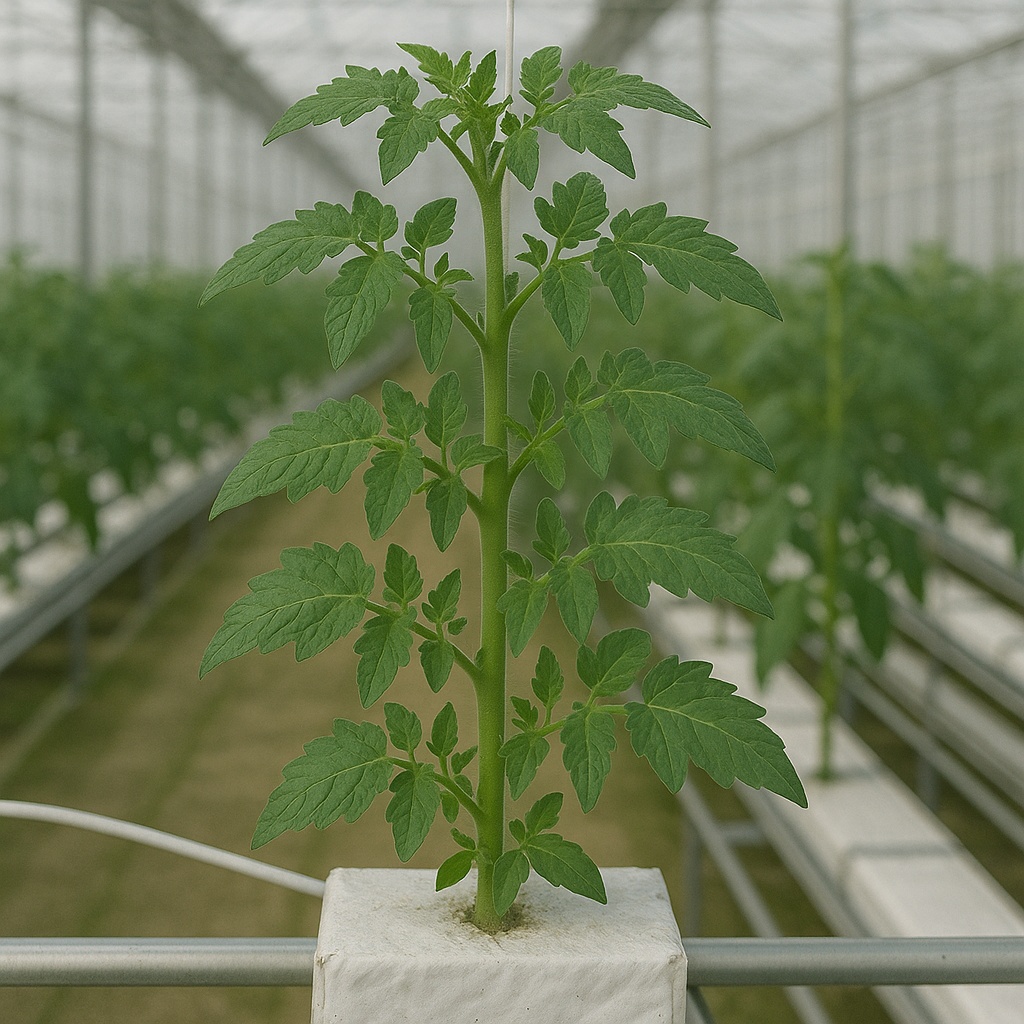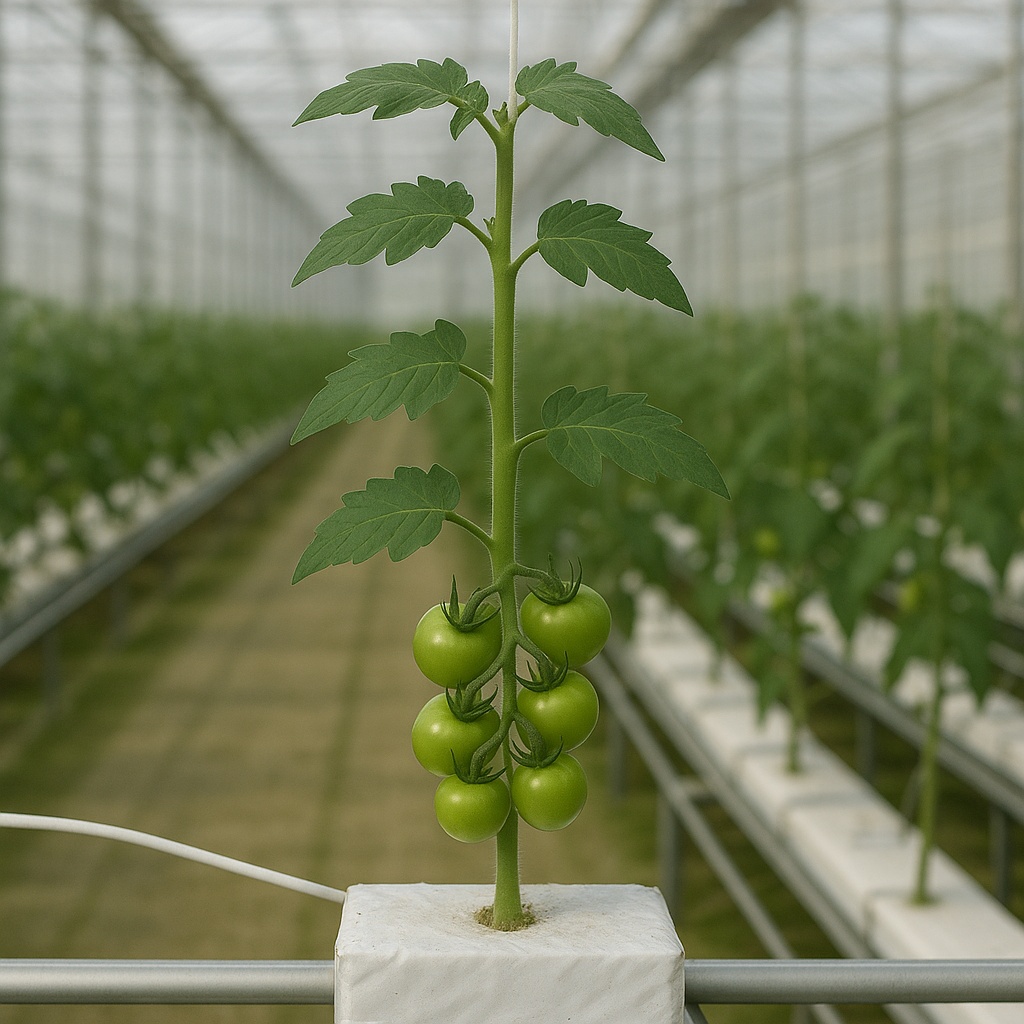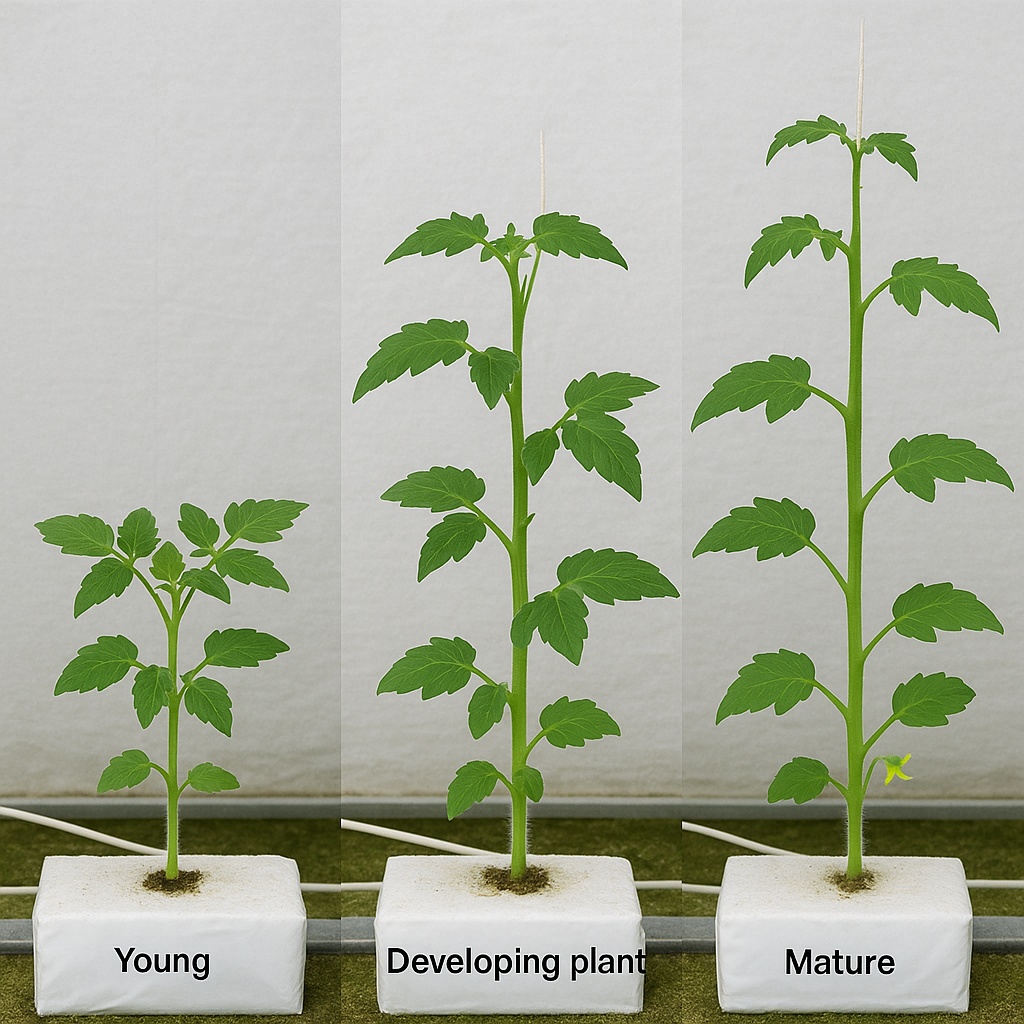Training and pruning hydroponic tomatoes is the key to transforming your plants from wild, unproductive vines into highly efficient fruit-producing machines. After establishing your variety selection and setup planning, system setup, and nutrient management from our previous guides, proper training techniques can increase your yield by 40-60% while making maintenance significantly easier.
Unlike soil-grown tomatoes that rely on natural root restriction, hydroponic tomatoes have unlimited access to nutrients and water, leading to explosive vegetative growth. Without proper training and pruning, this vigorous growth results in dense foliage, poor air circulation, and reduced fruit production. This comprehensive guide covers eight essential training and pruning techniques that will maximize your hydroponic tomato harvest.
Table of Contents
- Understanding Tomato Growth Patterns in Hydroponics
- Essential Tools and Timing for Training
- The 8 Core Training and Pruning Techniques
- Training Systems: Single vs. Multi-Stem Methods
- Weekly Training Schedule and Maintenance
- Common Training Mistakes to Avoid
- Troubleshooting Training Problems
- Advanced Training Techniques for Maximum Yield
- FAQ: Training and Pruning Questions
Understanding Tomato Growth Patterns in Hydroponics
Hydroponic tomatoes exhibit significantly different growth patterns compared to their soil-grown counterparts. With unlimited access to nutrients and optimal growing conditions, hydroponic tomato plants can grow 2-3 times faster and reach heights of 8-12 feet in indeterminate varieties.
Indeterminate vs. Determinate Growth: Indeterminate tomatoes continue growing throughout the season, requiring ongoing training and support. These varieties are ideal for hydroponic systems as they provide continuous harvests for 6-8 months. Determinate varieties grow to a predetermined height and produce fruit in concentrated periods, making them less suitable for long-term hydroponic production.
Key Growth Characteristics in Hydroponics:
- Rapid vegetative growth: New shoots emerge every 7-10 days
- Strong apical dominance: Main stem grows aggressively upward
- Abundant sucker development: Secondary shoots form at every leaf joint
- Heavy fruit clusters: Individual trusses can weigh 2-4 pounds when fully loaded

Essential Tools and Timing for Training
Required Tools:
- Clean, sharp pruning shears or scissors
- Soft plant ties (velcro, cloth strips, or specialized clips)
- Support structures (stakes, cages, or trellises)
- Rubbing alcohol for tool sterilization
- Disposable gloves to prevent disease transmission
Optimal Timing: Training should begin when plants reach 12-18 inches in height and continue throughout the growing season. The best time for pruning is mid-morning when plants are fully hydrated but surface moisture has evaporated, reducing disease risk.
The 8 Core Training and Pruning Techniques
1. Sucker Removal (Most Critical)
Suckers are shoots that develop in the crotch between the main stem and side branches. In hydroponic systems, these suckers grow rapidly and can quickly overwhelm the plant.
How to Remove Suckers:
- Identify suckers when they’re 2-4 inches long
- Pinch or cut them cleanly at their base
- Remove suckers weekly to prevent energy diversion
- Focus on suckers below the first fruit cluster initially
Benefits: Directs energy to fruit production, improves air circulation, reduces disease pressure.
2. Lower Leaf Pruning
Remove leaves below the lowest fruit cluster once fruit begins to set. This technique, called “leafing up,” improves air circulation and prevents soil-borne diseases.
Progressive Leafing Schedule:
- Week 1: Remove lowest 2-3 leaf sets
- Week 2-3: Continue removing leaves as new clusters develop
- Ongoing: Maintain 15-18 healthy leaves above fruit clusters
3. Single-Stem Training
The most common method for hydroponic tomatoes, single-stem training maximizes light penetration and simplifies maintenance.
Steps:
- Select the strongest main stem as your primary leader
- Remove all suckers consistently
- Support the main stem with stakes or strings
- Allow only the main stem to continue growing upward

4. Top Pruning (Stopping)
When plants reach the top of your growing space (typically 7-8 feet), remove the growing tip to redirect energy to fruit development.
Timing: Top plants 6-8 weeks before your intended harvest end to allow existing fruit to mature fully.
5. Flower Cluster Management
Manage flower clusters to optimize fruit size and quality.
Techniques:
- Remove the first 1-2 flower clusters to encourage strong vegetative growth
- Limit clusters to 4-6 fruits for larger tomatoes
- Remove malformed or late-developing flowers within clusters
6. Leaf Positioning and Support
Properly position remaining leaves to maximize light exposure while maintaining plant health.
Best Practices:
- Tuck leaves under support wires rather than above
- Ensure leaves don’t shade developing fruit clusters
- Remove any leaves touching the growing medium
7. String Training (Dutch Method)
A popular commercial technique using strings for support rather than rigid stakes.
Setup:
- Install overhead support wires
- Attach biodegradable strings from plants to overhead supports
- Wind plants around strings as they grow
- Adjust string tension regularly
8. Multi-Stem Training (Advanced)
For experienced growers seeking maximum yield, multi-stem training allows 2-3 main stems per plant.
Process:
- Allow 1-2 strong suckers near the base to develop
- Train each stem separately with individual support
- Maintain consistent pruning on all stems
- Requires 50% more growing space per plant
Training Systems: Single vs. Multi-Stem Methods
Single-Stem System:
- Pros: Easier maintenance, better air circulation, higher fruit quality
- Cons: Lower total yield per plant
- Best for: Beginners, limited space, cherry tomatoes
Multi-Stem System:
- Pros: Higher total yield, more efficient use of nutrients
- Cons: Complex maintenance, requires more space and support
- Best for: Experienced growers, commercial production
Weekly Training Schedule and Maintenance
Week 1-2 (Transplant to 18 inches):
- Install support structures
- Begin sucker removal
- Monitor for strong main stem development
Week 3-6 (Vegetative Growth):
- Continue weekly sucker removal
- Begin lower leaf pruning
- Install training supports (strings/stakes)
Week 7-12 (Flowering and Early Fruit):
- Maintain consistent sucker removal
- Progressive leaf pruning below fruit clusters
- Flower cluster management
Week 13+ (Full Production):
- Continue all maintenance practices
- Monitor for top pruning timing
- Harvest mature fruit regularly

Common Training Mistakes to Avoid
- Over-pruning: Removing too many leaves reduces photosynthesis capacity
- Inconsistent sucker removal: Allowing suckers to grow large before removal
- Poor timing: Pruning during high humidity or wet conditions
- Inadequate support: Using weak materials that break under fruit weight
- Ignoring sanitation: Not sterilizing tools between plants
Troubleshooting Training Problems
Problem: Excessive vegetative growth, few flowers
- Solution: Reduce nitrogen levels, increase phosphorus, remove more suckers
Problem: Weak stems breaking under fruit weight
- Solution: Provide additional support, reduce fruit load per cluster
Problem: Poor fruit set after training
- Solution: Ensure adequate pollination, check environmental conditions
Problem: Disease spreading after pruning
- Solution: Improve air circulation, sterilize tools, adjust humidity levels
Advanced Training Techniques for Maximum Yield
Double-Leader System: Allow two main stems from the base, training each separately for 30-40% yield increase.
Umbrella Training: For determinate varieties, allow side branches at the top to create an umbrella effect.
Lean and Lower: Gradually lean tall plants horizontally to continue vertical growth in limited spaces.
FAQ: Training and Pruning Questions
Q: How often should I remove suckers? A: Check plants every 3-4 days and remove suckers when they’re 2-4 inches long. Weekly removal is the minimum frequency for healthy plants.
Q: Can I root the suckers I remove? A: Yes! Healthy suckers 4-6 inches long can be rooted in water or growing medium to create new plants with identical genetics.
Q: What’s the maximum height for hydroponic tomatoes? A: Most home systems accommodate 7-8 feet. Commercial systems can support 12+ feet with proper infrastructure.
Q: Should I remove leaves touching the fruit? A: Remove leaves that directly contact fruit to prevent scarring and disease, but maintain healthy leaves near fruit clusters for energy production.
Q: How many fruit clusters should I allow per plant? A: Indeterminate varieties can support 8-12 clusters simultaneously. Remove older clusters once fruit is harvested to redirect energy.
Conclusion
Proper training and pruning transforms hydroponic tomatoes from unruly vines into productive, manageable plants. These eight essential techniques—consistent sucker removal, strategic leaf pruning, single-stem training, proper support, and cluster management—form the foundation of successful hydroponic tomato production.
Remember that training is an ongoing process throughout the growing season. Consistency is key: establish a weekly routine and stick to it. With proper training techniques, your hydroponic tomatoes will reward you with abundant harvests of high-quality fruit for 6-8 months of continuous production.
Start with single-stem training for your first season, then experiment with advanced techniques as you gain experience. The effort invested in proper training and pruning will pay dividends in increased yield, improved fruit quality, and easier plant management throughout the growing season.
Next in Series: Don’t miss our final guide “Troubleshooting Hydroponic Tomato Problems” where we’ll cover identifying and solving common issues that can derail even well-trained plants.
References
[1] Jovicich, E., et al. (2004). Greenhouse tomato fruit yield and quality as affected by nitrogen source and rate. HortScience, 39(7), 1430-1436.
[2] Heuvelink, E. (2005). Tomatoes. CABI Publishing, Wallingford, UK.
[3] Papadopoulos, A. P. (1991). Growing greenhouse tomatoes in soil and in soilless media. Agriculture Canada Publication, 1865/E.